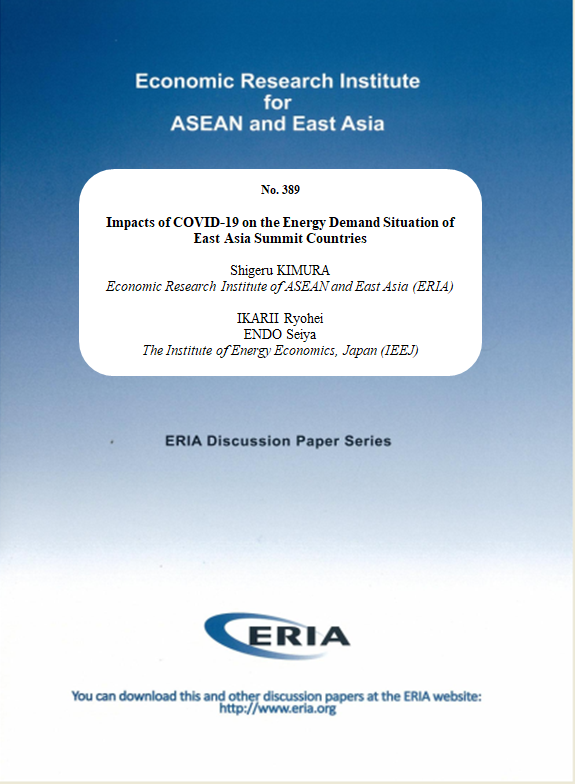Impacts of COVID-19 on the Energy Demand Situation of East Asia Summit Countries

Print Article:
The coronavirus disease (COVID-19) pandemic has brought us a ‘New Normal’ life style and the lockdown has severely harmed economic growth, with many countries estimated to record negative economic growth in 2020. Due to the high correlation between energy demand and economic growth, energy demand is also affected. Against this background, ERIA analyses how energy demand has decreased as a result of the COVID-19 pandemic using East Asia Summit (EAS) energy outlook models that are regularly updated by ERIA and apply an econometric approach. The outlook models cover the Association of Southeast Asian Nations (ASEAN) 10 countries plus seven countries – Australia, China, India, Japan, Republic of Korea, New Zealand, and the United States. According to gross domestic product (GDP) growth estimates for EAS countries in 2020, only three countries – China, Lao PDR, and Viet Nam – show positive growth, though less than 2%, and the others show negative growth. Total Final Energy Consumption (TFEC) of the EAS countries fell in 2020, but it is expected to rebound in 2021 and projected to return to the originally forecast trend of energy demand up to 2050. Once official energy statistics become available, a comparison between model results and actual statistics will be made to understand how the energy outlook models trace the impact of the pandemic on energy demand.
Impacts of COVID-19 on the Energy Demand Situation of East Asia Summit Countries




